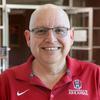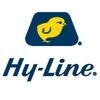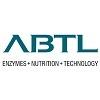Explore all the information on
Poultry nutrition - Other additives
Alternative feed additives have promising importance in broiler production due to the ban on the use of certain antibiotics. The most used antibiotic alternatives in broiler production are phytogenics, organic acids, prebiotics, probiotics, enzymes, and their derivatives. Antibiotic alternatives have been reported to increase feed intake, stimulate digestion, improve feed efficiency, increase growth performance, and reduce the incidence of diseases by modulating the intestinal microbiota and immune system, inhibiting pathogens, and improving intestinal integrity. Simply, the gut microbiota is the target to raise the health benefits and growth-promoting effects of feed additives on broilers. Therefore, naturally available feed additives are promising antibiotic alternatives for broilers.
Following the success of the Research Topic “ Alternatives to Antimicrobial Growth Promoters and Their Impact in Gut Microbiota, Health, and Disease: Volume II ,” we received an invitation from Frontiers to work on Volume II. This second volume includes 31 scientific articles, in the text of individual chapters in this Frontiers Research Topic. The editors are grateful to all 197 authors that contributed and participated in the achievement of Volume II. Homo...
Comments : 0
Recommendations: 2
INTRODUCTION The use of soybean meal in poultry diets can be tested for antinutritional factors, which is easily identified with ureatic activity and protein solubility in KOH analysis. This research aimed to evaluate soybean meal quality measured by ureatic activity and KOH solubility in poultry feed mills. MATERIAL AND METHODS For this analysis, 283 samples were obtained from a broiler feed mill located in Goiás, Brazil. Soybean meal samples were...
Comments : 18
Recommendations: 4
Balanced nutrition for different phases of chicken The potential of the germ plasm in poultry available in India is manifested to the maximum, when the health and management of the flock is maintained. If either the nutrition or nutrient management is suboptimal, growth and egg production decline, increasing the cost of production. Higher nutrient specifications than required cause nutrient wastage, stress on the bird and increased cost of production. ...
Comments : 2
Recommendations: 1
Although the first mentions to “choline” date from XIX century (In 1850, Theodore Gobley already described a substance “lecithin”, and then, in 1862, Adolph Strecker heated lecithin from bile, which generated a new nitrogenous chemical termed “choline”), choline’s role nutrition was not well known until 1930s. Since then, several researches have established it as an essential nutrient, which main functions could be summarized...
Comments : 24
Recommendations: 7
...
Comments : 0
Recommendations: 1
Comprehensive strategy for animal health care
Looking forward to seeing you there and sharing our innovative solution with you for livestock animals in natural way!
Welcome to...
Comments : 0
Recommendations: 1
With the temperatures rising in most regions, concern for heat stress events in Poultry barns is also on the rise. Heat stress can have a negative impact on several aspects of a chicken’s well-being; one consequence that can significantly impact poultry production and profitability is feed efficiency. With chickens starting to feel the physical impact of heat stress as early as April and May in some regions, solutions are needed to assist their physiological defenses. Nutritional...
Comments : 0
Recommendations: 0
Progres® is a resin acid product for animal feeding. Its power comes from the Finnish forest. Natural resin acids act on the origin of inflammatory damage, by decreasing the production of Matrix Metalloproteinase enzymes. In this way, resin acids protect the gut from the harmful effects ...
Comments : 2
Recommendations: 1
DESCRIPTION OF PROBLEM The world population is growing over the years, and it is expected to increase by 2 billion people in 2050. As a result, the increased demand for animal protein will have to be met by a congruent production in accordance to sustainable and environmental concerns. This suggests that alternative feed ingredients should be introduced in the animal production chain (Henchion et al., 2017). Insects meal is one of the promising strategies proposed...
Comments : 0
Recommendations: 0
In this video interview, Martina Kluenemann, Research Manager for Nutrition Immunology and Physiology at Evonik Animal Nutrition, highlights how Guanidinoacetic acid (GAA) could be beneficial to improving animal energy metabolism in animal diets...
Comments : 2
Recommendations: 7
GuanAMINO® is a creatine source that ensures optimal nutrient utilization and returns over feed cost. Furthermore, it spares metabolic energy and works towards an optimized amino acid metabolism. Not sure why you should add GuanAMINO® to your feeds? Contact your Evonik representative for more information.
...
Comments : 2
Recommendations: 5
Karen Wedekind, Comparative nutrition manager at Novus International, highlights the benefits of using Organic trace minerals as an important factor that can positively impact bone and cartilage development in monogastrics...
Comments : 0
Recommendations: 2
Physiological aspects of the properly functioning digestive system and the organs directly related to it are at the heart of profitability in commercial poultry production. One of the most important organs in the body of every bird is the liver, and the complexity of functions it fulfills proves its unique significance. This organ may be particularly vulnerable to damaging factors, which in turn can contribute to the reduction of production capacity of the flock and, in extreme cases,...
Comments : 0
Recommendations: 1
If Immunity is your top priority, Immunotech Forte™ is a synergistic combination of systemic enzymes such as Serratiopeptidase, Papain, Bromelain, Bioflavonoids,vitamins and amino acids. It is a fortified immunity enhancer to boost bird’s immune system, reduce stress and gain resistance to disease incidences....
Comments : 6
Recommendations: 3


Bacillus amyloliquefaciens CECT 5940 (Ecobiol®) alone or in combination with antibiotic growth promoters improve performance in broilers under enteric pathogen challenge
Suggested link
Dr. Andreas Lemme, Director of Technical Consultancy, answers the question: what hinders or limits protein reduction today? “Firstly, one needs to have good knowledge about the composition and quality of feed ingredients. Technologies are available to quickly get the required information. In the context of amino acid nutrition, we have developed near-infrared spectroscopy calibrations to get the full analysis of ingredients within seconds..."...
Comments : 1
Recommendations: 7
Introduction Soybean meal (SBM) is the most important and preferred source of quality protein in animal feeds (Banaszkiewicz, 2011). Among the oil seeds, SBM contains the highest crude protein (CP) and has the best AA profile, with only 6% crude fibre (Dei, 2011). The AAs in SBM are highly digestible by poultry (Newkirk, 2010). Based on the CP content, SBM can generally be classified as high protein (47% - 50%), or low protein (44% - 46%). Popescu & Criste (2003) suggested...
Comments : 0
Recommendations: 0
I. INTRODUCTION Early life stress may have a negative impact on the performance of broiler flocks. It has been observed that a severe cold stress (12°C below the normal temperature) throughout the life cycle of broilers negatively impacts production parameters (Su et al., 2020) and immune system development (Zhao et al., 2013). The use of vitamins and other molecules with antioxidant properties have been investigated in poultry undergoing different challenge models...
Comments : 0
Recommendations: 0
I. INTRODUCTION The transition in the layer industry from conventional cages to cage-free and even further into free-range production is rewriting the nutritional requirements of the laying hen. In the last 25 years, the number of eggs a hen can produce has increased by about 2 eggs each year while the amount of feed required to produce these eggs has been reduced by 18.6% in cages (Anderson, 1991; Anderson et al., 2013, Anderson, 2019). The result has been a high value...
Comments : 0
Recommendations: 0
I. INTRODUCTION Coccidiosis is caused by Apicomplexa protozoa of the family Eimeriidae. In poultry, most species responsible for coccidiosis belong to the genus Eimeria, which infect various sites in the intestine. Coccidiosis is recognized as one of the most common and economically important diseases in broilers, with an estimated $16,7 billion in losses globally per year. The average cost of coccidiosis per chicken produced is estimated to be $0.21 (Blake et al.,...
Comments : 1
Recommendations: 0
I. INTRODUCTION Antibiotic stewardship and the judicious use of antibiotics as treatment for specific disease occurrences, rather than using sub-therapeutic doses for growth promotion, are well established concepts within the Australian poultry industry (Alfirevich, 2018). Intensive production systems however, are prone to increased stressors and large scale production does not always meet the individual needs of each bird. Optimising production performance within this...
Comments : 0
Recommendations: 1




.jpg&w=3840&q=75)
















.jpg&w=3840&q=75)














